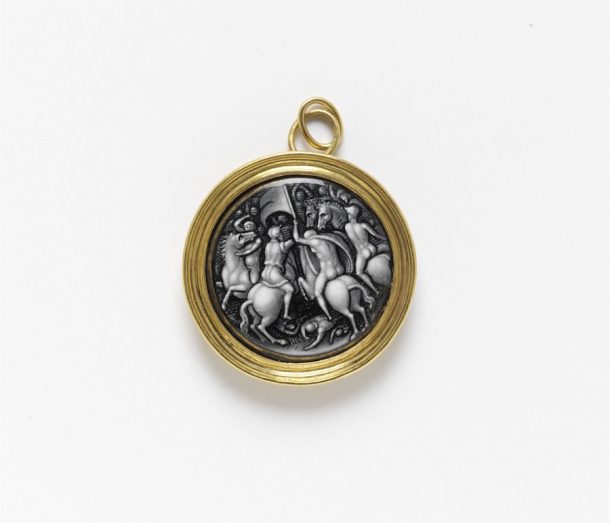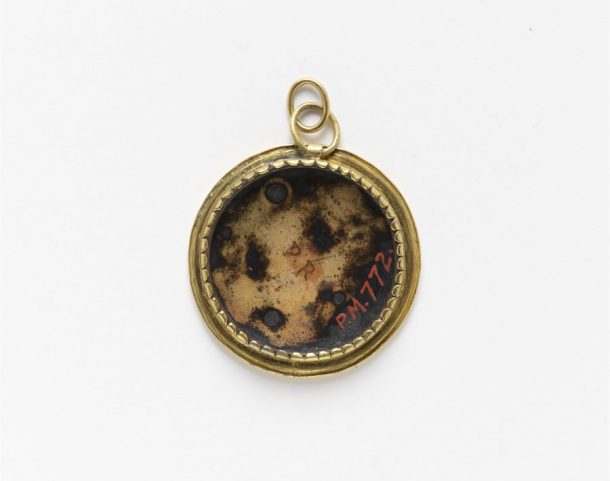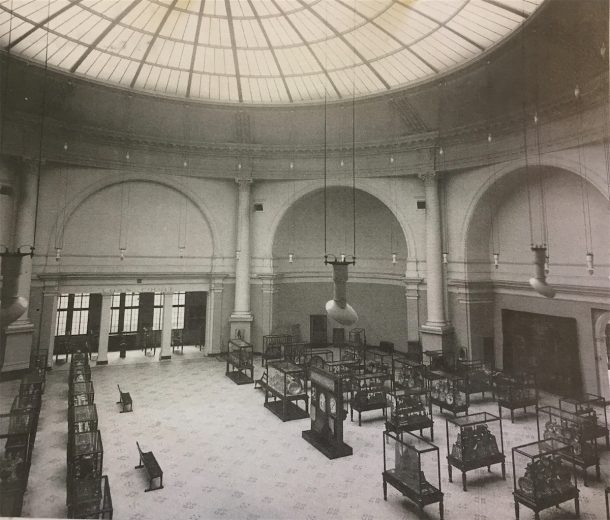The Coronavirus crisis has halted not only our own travel plans and holidays, but also the journeys undertaken by our works of art. Whether travelling from one museum to another to appear in exhibitions, from a private collection to an auction house, or from an artist to a dealer, works of art are constantly criss-crossing the globe as they pass through different hands and into different collections. One of the joys of curatorial work is having the chance to unpack these histories and trace the journeys that objects have taken since the time of their making.

One such example arrived in South Kensington in 2002, when the Museum received on loan an extraordinary collection of jewels assembled by Patricia Goldstein, a collector and dealer based in New York. Every year since 1968, Pat Goldstein had travelled to Europe to buy jewels in France, Belgium and Britain, always making time on her trips to visit the jewellery galleries at the V&A. With great generosity, she gave her collection to the American Friends of the V&A shortly before she died in 2002. Among hundreds of treasures was this small pendant, consisting of a painted enamel plaque, mounted in a gold frame with two gold links at the back so that it can be hung from a chain and worn around the neck.
The plaque depicts a group of cavalrymen in battle, with one raising a standard above his head as their horses spring into action. It is executed in delicate grisaille (monochrome) with highlights rendered using enlevage; a sophisticated technique whereby the enameller used a thin needle to scratch away at the layers of white enamel to achieve subtle gradations in tone. This style was popular among the master enamellers of Limoges in mid-west France, who flourished during the Renaissance period under the patronage of the courts of Francis I and Henri II. In fact, the reverse of the plaque bears the initials ‘P.R.’ in gold, suggesting the piece was made in the workshop of the Limoges artist Pierre Reymond (1513 – 1584). Perhaps it was originally designed to be worn as a hat badge according to mid-16th century fashion, as the gold frame and chain links are 20th-century additions.

As well as the artist’s initials, the reverse also features an inventory number, ‘P.M.772’, painted in red onto the counterenamel, a number that marks the piece as having previously been in the collections of the American financier John Pierpont Morgan (1837 – 1913). At the time of its dispersal in 1917, Morgan’s collection of Renaissance decorative art was one the largest and most esteemed in private hands in the world, and today many objects bearing similar red inventory numbers can be seen on display in the galleries of major public collections, including the Metropolitan Museum of Art and the Frick Collection in New York, as well as here at the V&A. These numbers hold a special significance for the V&A, however, because they also mark objects out as having been on display in its galleries over 100 years ago when Morgan lent his collections to the Museum. In fact, this enamel was just one of over 3,000 objects Morgan had on display in the V&A’s cabinets between 1901 and 1912, a collection that expanded to fill almost an entire gallery – Room 40, where the fashion collections are now displayed.

Limoges enamels of the Renaissance period were particularly fashionable among 19th-century collectors, and Pierpont Morgan assembled an outstanding collection. He bought this piece from the dealer Charles Mannheim in Paris in May 1901, and lent it to the V&A the following month. It remained on display here until 1912, when Morgan arranged to have his collection packed up and shipped from Liverpool to New York. There, the roundel spent four years on display at the Metropolitan Museum of Art, before it was bought by the New York dealer, Henry Duveen, and eventually, made its way into Patricia Goldstein’s collection.
Having crossed the Channel at the end of the 19th century, the Atlantic in the early 20th century, before travelling back to London at the dawn of the 21st, this small roundel speaks of the development of the international art market, of shifts in taste, and of the changing fortunes of museums. When Morgan’s loan was withdrawn from the V&A in 1912, it was widely reported in the press, with one writer lamenting the ‘drainage’ of works of art from British shores and the ‘disastrous blank’ left in the galleries (The Times, 26 January 1912). Perhaps it would be of some consolation to know that a few of his treasures eventually found their way back to South Kensington.


